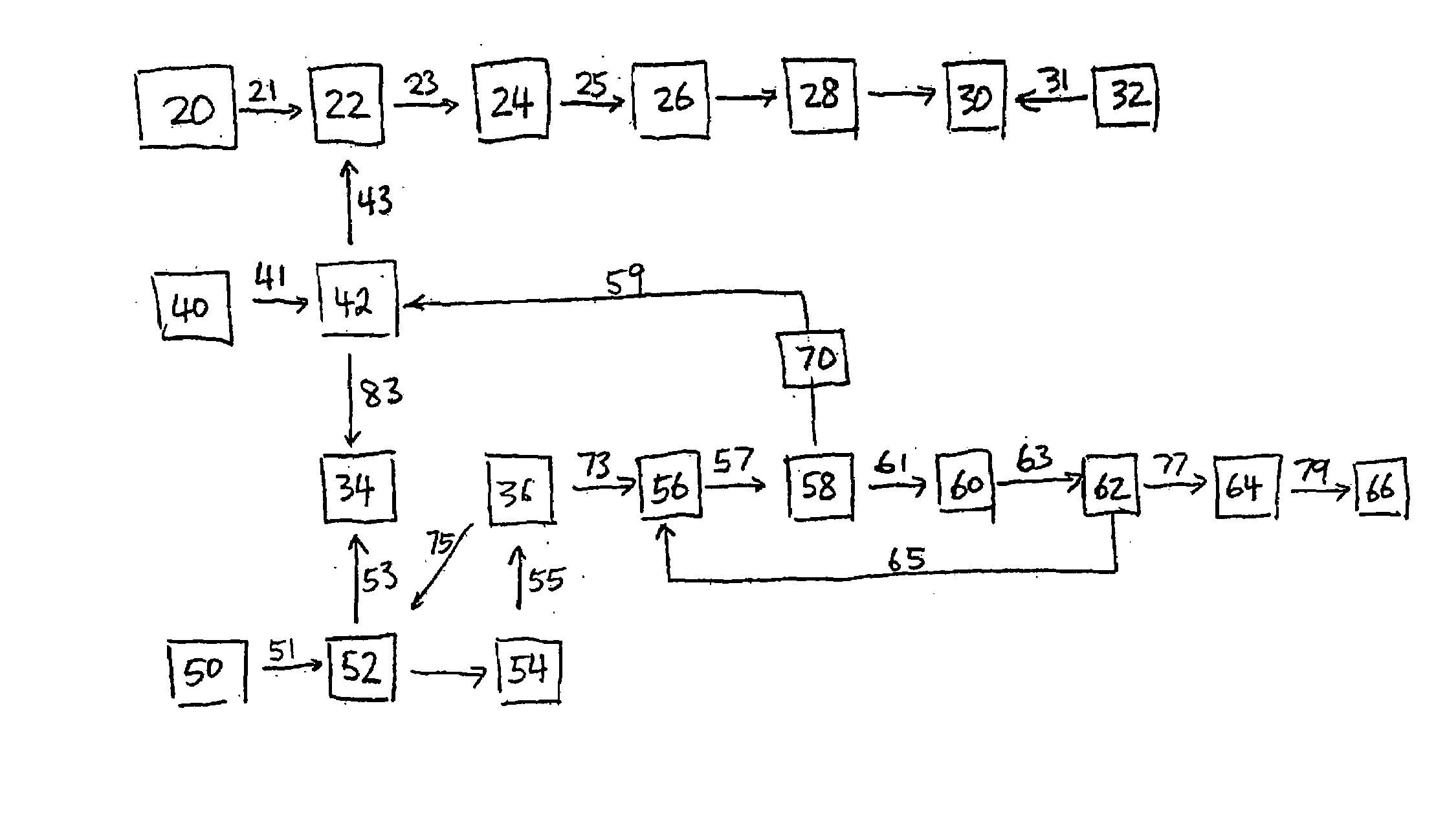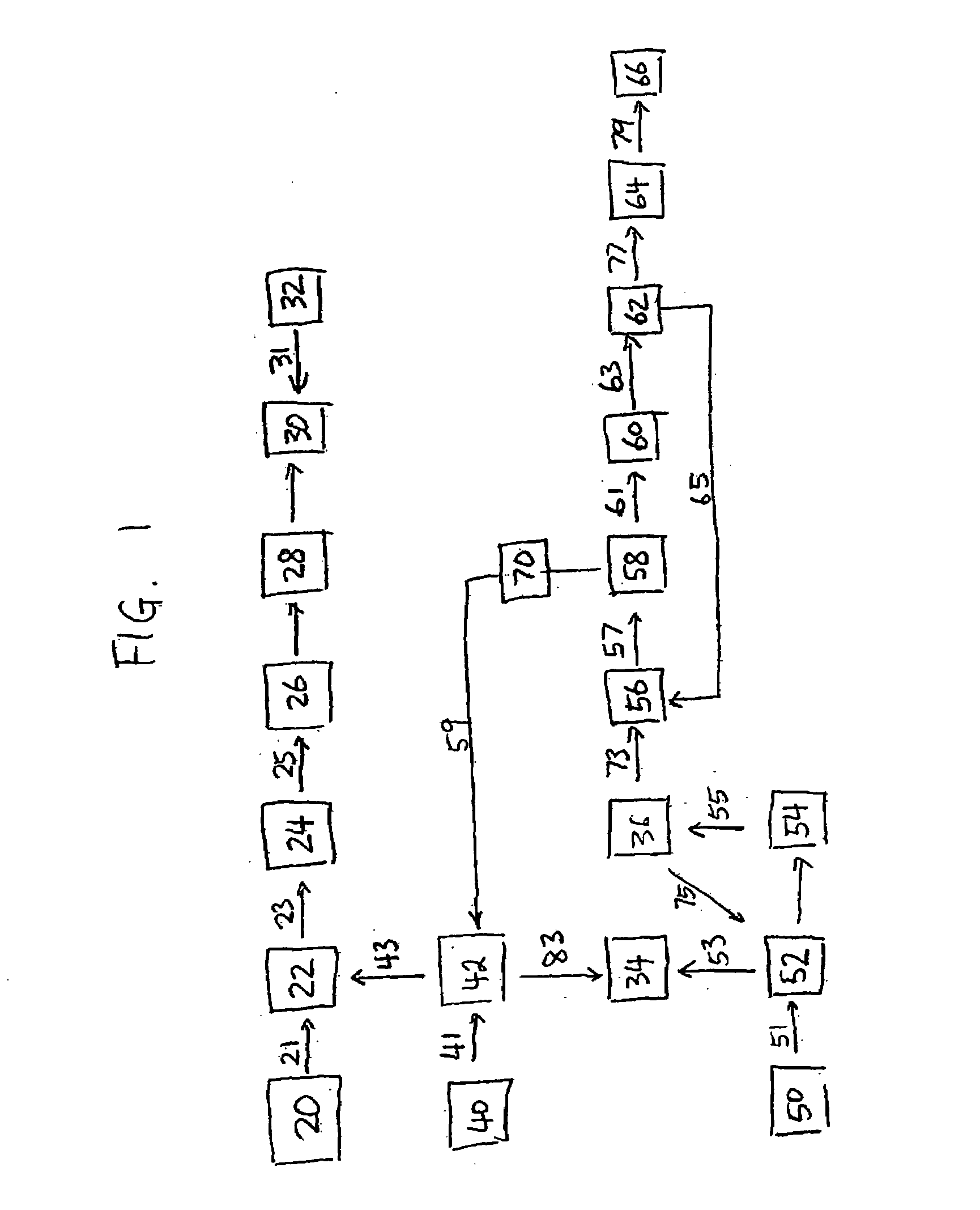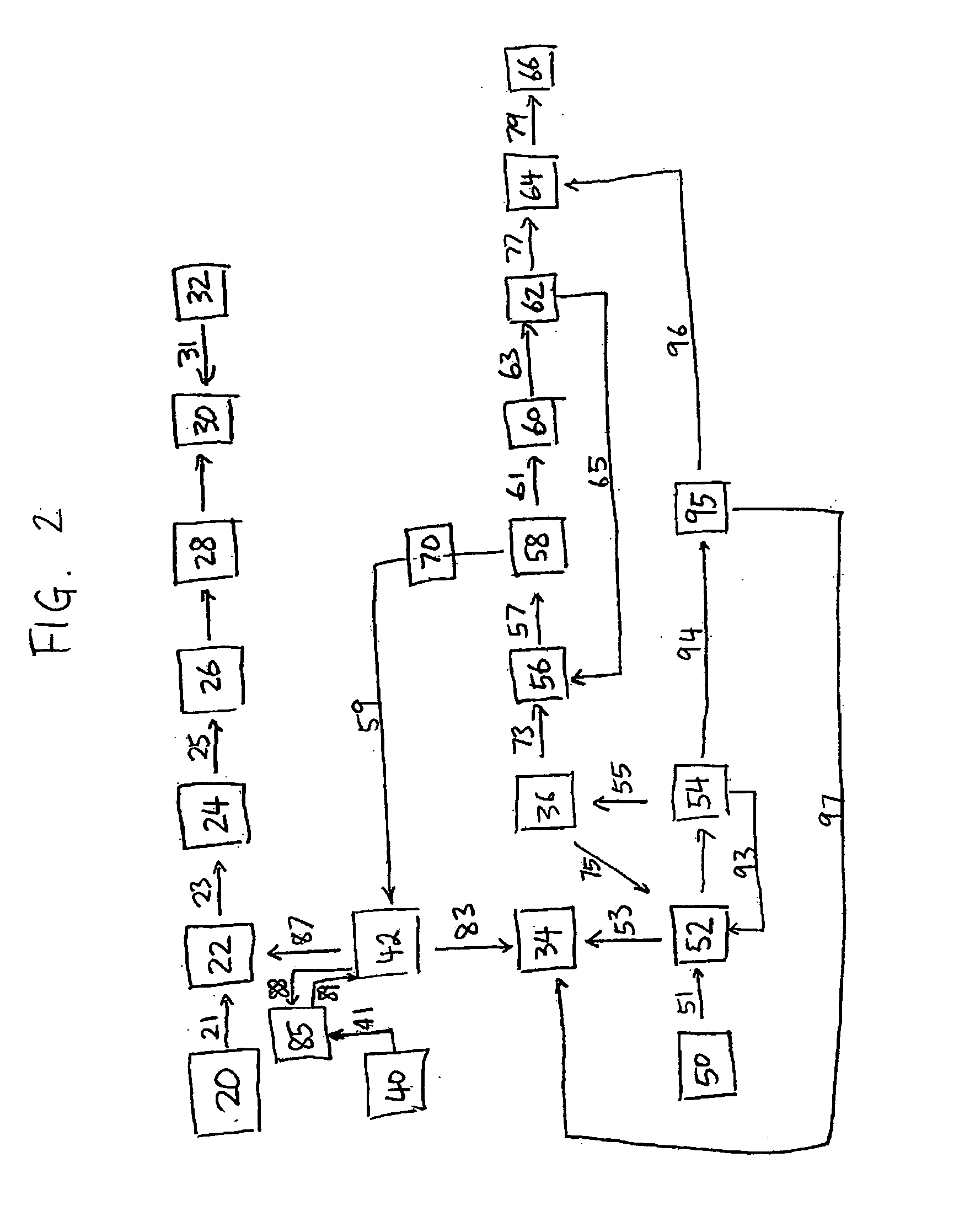Water treatment
a technology for water treatment and wastewater treatment, applied in water/sewage multi-stage treatment, separation process, application, etc., can solve the problems of reducing the concentration of sodium in beverage products, water supply is taken from municipal influent water with its own particular problems, and treatment does not remove sodium in water, so as to reduce influent water costs, reduce effluent sewer costs, and avoid stress on the low brix system
- Summary
- Abstract
- Description
- Claims
- Application Information
AI Technical Summary
Benefits of technology
Problems solved by technology
Method used
Image
Examples
Embodiment Construction
[0035]Brix is a refractive index measurement. In essence, it measures sugar content, which is also related to the wastewater discharge parameter, BOD.
[0036]The present water treatment concept has a number of purposes. These are primarily used to treat waste process water (low and high brix) so that the sugar in the low brix stream are removed, and in the sugar concentration in the high brix stream is further concentrated (approximately 10 times further concentrated) so the high brix stream can be disposed of as a useful byproduct, for example as a cattle feed revenue stream.
[0037]Referring to FIG. 1, in a system 10 for treating water in the beverage industry, municipal water 21 contains dissolved contaminants that must be removed for it to be suitable as a raw material for manufacturing beverages. These contaminates consist of hardness (calcium and magnesium), sodium and alkalinity. The municipal water 21 from municipal water source 20 enters first tank 22, where it is blended with ...
PUM
 Login to View More
Login to View More Abstract
Description
Claims
Application Information
 Login to View More
Login to View More - R&D
- Intellectual Property
- Life Sciences
- Materials
- Tech Scout
- Unparalleled Data Quality
- Higher Quality Content
- 60% Fewer Hallucinations
Browse by: Latest US Patents, China's latest patents, Technical Efficacy Thesaurus, Application Domain, Technology Topic, Popular Technical Reports.
© 2025 PatSnap. All rights reserved.Legal|Privacy policy|Modern Slavery Act Transparency Statement|Sitemap|About US| Contact US: help@patsnap.com



